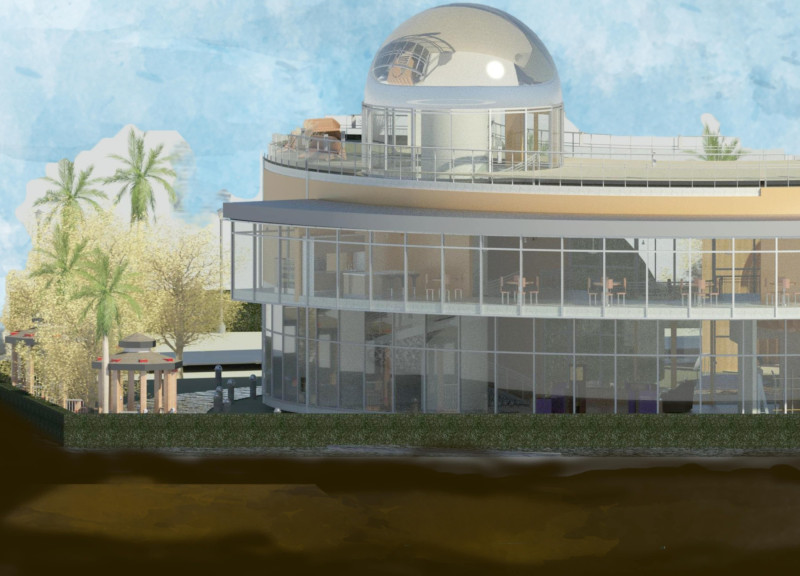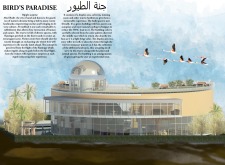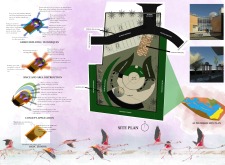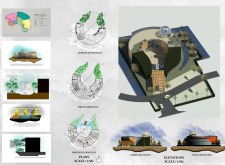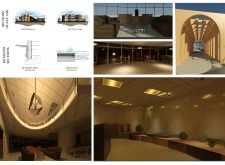5 key facts about this project
Jنة الطيور, or Bird's Paradise, is located in Abu Dhabi and designed to bring people closer to nature. Situated in the Al Wathbah reserve, the visitor center aims to enhance educational experiences while showcasing the area's diverse ecosystems. Inspired by the flight of flamingos, the design reflects their graceful movement, resulting in a space that promotes interaction and discovery.
Architecture Concept
The visitor center features several distinct areas, including a display room, a cafeteria, and a training facility. Each area is organized to encourage visitors to engage with the rich biodiversity of the reserve. The layout supports a flow between indoor and outdoor spaces, allowing guests to explore the narratives of local plant and animal life.
Design Features
A notable aspect of the center is its glazed façade on the ground level, which creates a visual effect of the building floating above the surrounding landscape. This design naturally invites sunlight into the space and fosters a connection to the outdoors. Light beige tones were chosen for the exterior, as they help reflect the local climate and lessen heat absorption.
Sustainable Strategies
Sustainability is an essential part of the design. Key features, such as green roofs and small water bodies, help create comfortable micro-climates and encourage local biodiversity. The layout includes seating areas and paths that invite visitors to interact with the nature around them, highlighting the importance of preserving the ecosystem while supporting small aquatic species.
Visitor Experience
Bird's Paradise is designed to provide an educational and entertaining experience for visitors. Natural cooling methods reduce reliance on artificial heating and cooling, complementing the building's energy-efficient design. Thoughtfully placed green areas help regulate temperatures, creating a pleasant environment for exploration and connection with the diverse plant and animal life in the reserve.
The presence of water bodies enriches the landscape, providing habitat options for various small aquatic species. These elements illustrate the ecological narrative the design seeks to convey, allowing guests to appreciate the beauty and complexity of the local environment.


